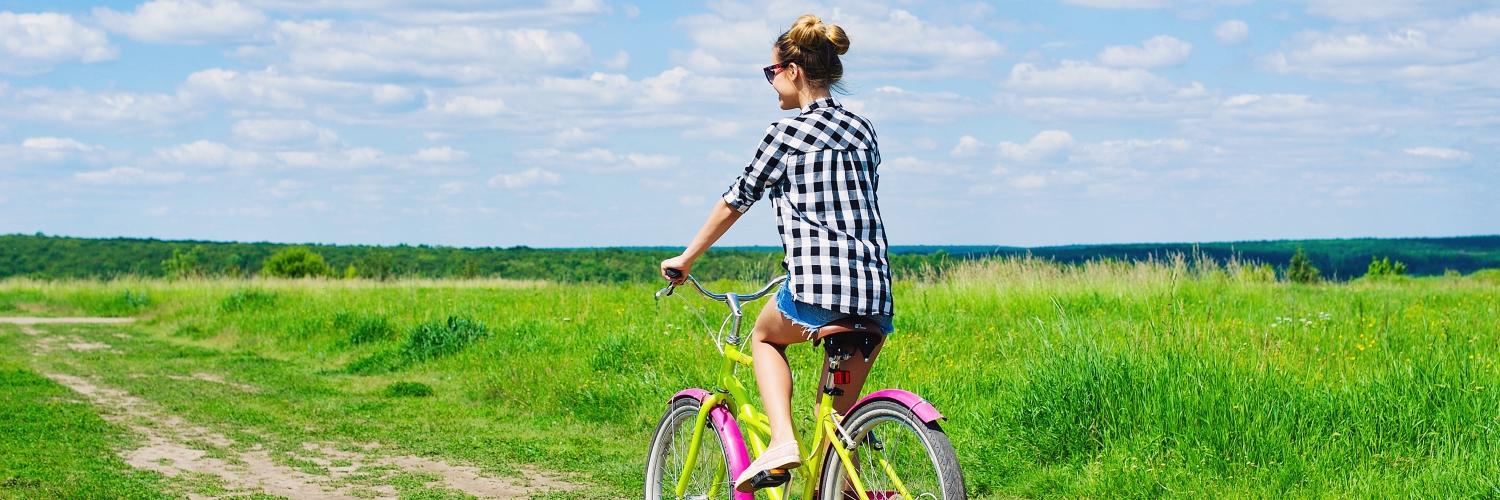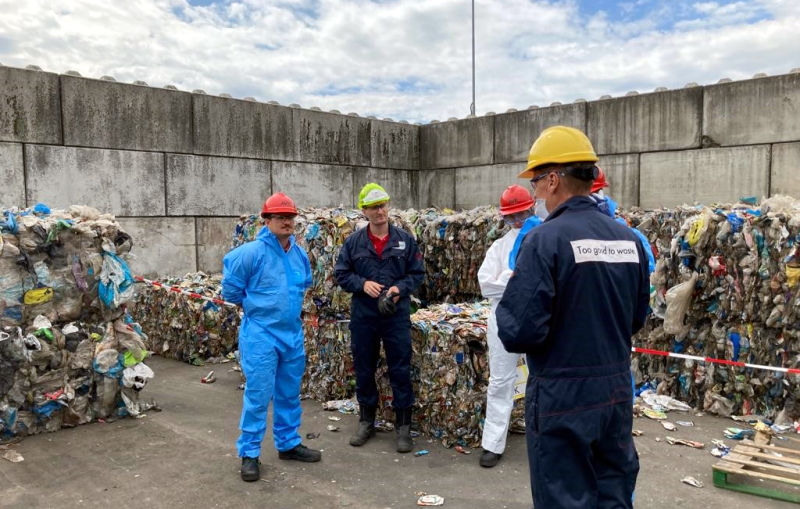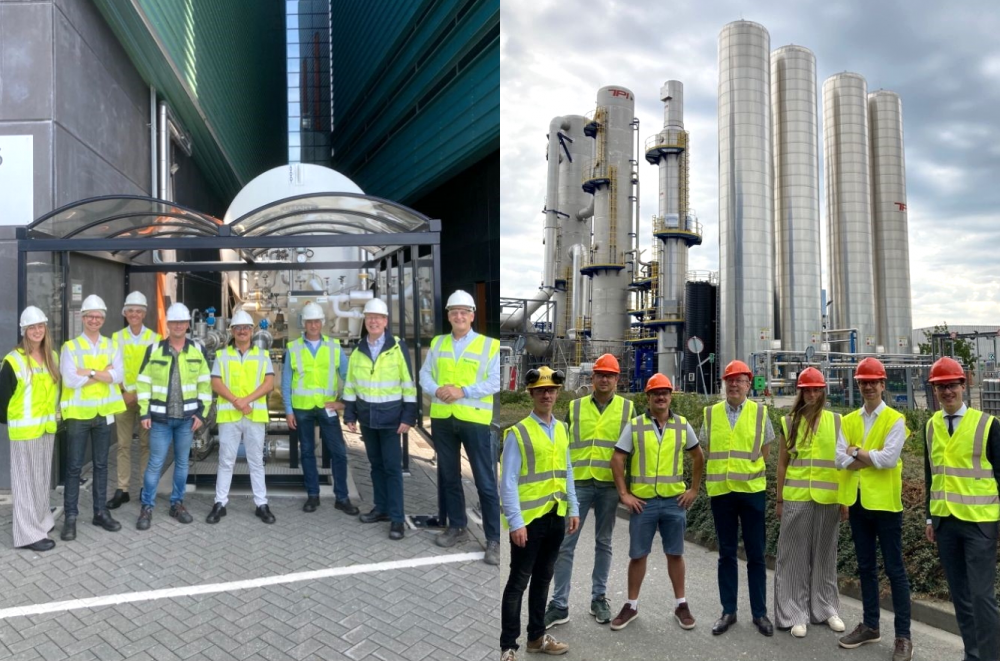
News
20 December 2022
Communication between policymakers and practitioners
European representative organisations visit Dutch waste sector
Practice-based knowledge is essential for effective policy. Two European delegations visited leading Dutch waste companies to get an impression of how the Dutch waste sector works. Working visits like these are an important way of learning from each other. ‘Seeing how things work in practice tells you much more than reading about them.’
Last summer two European representative organisations visited the Dutch waste sector: a team from the European Waste Management Association (FEAD) with secretary-general Valerie Plainemaison, and three representatives of the Confederation of European Waste-to-Energy Plants (CEWEP), including Fabio Poretti, its technical and scientific officer.

In recent years the efficiency of AVR’s post-separation plant has been increased from 55% to 70%
New insights
Plainemaison enthuses about the tour given by AVR’s commercial director Jasper de Jong of the company’s innovative post-separation facility and waste-to-energy plant in Rozenburg. ‘Seeing the plant, materials and people on the ground tells you much more than reading about them. Unlike the financial world, for example, the waste industry deals with physical materials and is tangible. A working visit like this makes it all concrete. Our technical officer, a trained engineer, was particularly thrilled to visit AVR’s new sorting plant.’ Plainemaison feels that communication between policymakers and practitioners is essential. ‘We learn from our members how it all works in practice. These encounters fuel the facts and figures we provide to policymakers. And in return, we inform the industry of developments in Brussels.’
Valerie Plainemaison (Fead):
‘We learn from our members how it all works in practice.’
Leader in CO2 capture
Poretti visited the carbon capture facilities at AVR in Duiven and at Twence in Hengelo, where Twence’s strategy adviser Wim de Jong presented the company’s plans for CO2 recovery. ‘The innovative CO2 capture facility in Duiven is groundbreaking, the first of its kind,’ says Poretti. ‘During our visits we were introduced in Duiven to the technology for liquefying captured CO2 for use in greenhouses as a substitute for natural gas. Twence’s technique for making sodium bicarbonate from CO2 is also the first installation in the world to test CO2 mineralisation for circular reuse in residual waste treatment.’
Carbon capture makes horticulture sustainable
Twence has started building a plant that will capture and reuse 100,000 tonnes of CO2. Flue gases from the incineration of non-recyclable residual and commercial waste in waste-to-energy plants are cleaned and the CO2 removed. The CO2 is not emitted from the stack, but is reused, for example in the form of sodium carbonate (baking powder) or as liquefied CO2 in greenhouse horticulture, where it replaces the use of natural gas to produce the CO2 needed for plant growth.
Seeing it in action
Poretti, who was trained as an energy engineer, is enthusiastic about the innovative techniques he was able to see in action. ‘These are real “toys for the boys”. Very big toys you can touch. It’s good to see them working in practice, in real life. We learn a lot and it leads to a valuable exchange of ideas. In turn, I was able to answer questions from operators who want to know what are the developments in the EU for the industry.’
Fabio Poretti (CEWEP):
‘It’s good to see them working in practice, in real life.’
Innovative processes
The four are in complete agreement about the value of such field visits. Plainemaison: ‘It enlightens or even changes the way you think about waste.’ AVR’s De Jong: ‘When most people think of waste, they see fully laden refuse vehicles. Even policymakers, let alone the general public, have little or no idea of the innovative processes that can generate heat and electricity and make other products from waste. Almost everyone who is given a tour of this facility is astonished and impressed. For instance, I would love to show a delegation from the Zero Waste Europe campaign group around here to give them a more accurate picture of what we do. Frans Timmermans could also pick up a lot of ideas for his Green Deal.’
Food for thought
The working visits lead naturally to an exchange of ideas. ‘We had an interesting discussion about incinerating plastic,’ says Plainemaison. ‘Five years ago that was standard practice, but now more and more plastic goes through a high-quality separation process. What does that mean for converting the remaining fraction into energy and other products, and for how treatment capacity should be distributed across Europe? Not every country needs as big a plant as the AVR one.’ Jasper de Jong adds, ‘The Netherlands now has more incineration capacity than it needs to process its own waste, but we can no longer think in purely national terms. Even if we import Spanish waste by boat, it is still much more environmentally friendly for us to put it through a high-quality separation process and incinerate the combustible and non-recyclable fraction than it is to landfill the plastic in Spain.’
Jasper de Jong (AVR):
‘Almost everyone who is given a tour of this facility is astonished and impressed.’
Market development
Wim de Jong looks forward to the circulair economy of tomorrow: ‘There is still much that can be done, like recovering rare earth elements and more non-ferrous metals from bottom ash, and electrochemical applications with methanol and formic acid from CO2. We are also looking into possibilities for extracting materials from solid manure, which would bring circular agriculture a step closer. But to become fully circular we will have to revise the subsidies for carbon capture, reuse and storage. Without innovative funding a profitable market in CO2 will not be possible.’ Poretti, leading author of the CEWEP Waste-to-Energy Climate Roadmap published this summer, concludes: ‘Our industry offers environmental service to communities and contributes to the EU circular economy, and is already climate neutral. Through the possible application of carbon capture technologies, the WtE sector has the potential to reach net negative CO2 emissions. If supported by EU policies, WtE will be a pivotal enabler of carbon neutrality by 2050.’

Last summer two European representative organisations visited the Dutch waste sector
Wim de Jong (Twence):
‘Without innovative funding a profitable market in CO2 will not be possible.’
Leaders
Poretti’s enthusiasm about the leading Dutch companies makes him the ideal ambassador for the visited plants and technologies – but exporting a blueprint is out of the question, he says. ‘There are big differences within Europe. You closed down your landfills long ago and have built up an efficient infrastructure, with buyers like greenhouse horticulture businesses and the chemical industry just around the corner,’ he says. ‘Dutch collection logistics and processing chains are at a high level, whereas in other parts of Europe they are still in their infancy,’ adds Plainemaison.
Efficiency of post-separation rising rapidly
In AVR’s post-separation plant the waste bags go through a shredder and magnets remove all the metal, after which a vibrating screen sorts the waste by size. Ballistic separators and wind shifters then separate out films (2D) from rigid plastic items and drink cartons (3D). Infra-red scanners pick out recyclable films, hard plastic and drink cartons from the residual waste. These items are transported in compressed bales to recycling companies where they are processed into new products. In recent years new and improved techniques have raised the efficiency of the plant from 55% to 70%.
